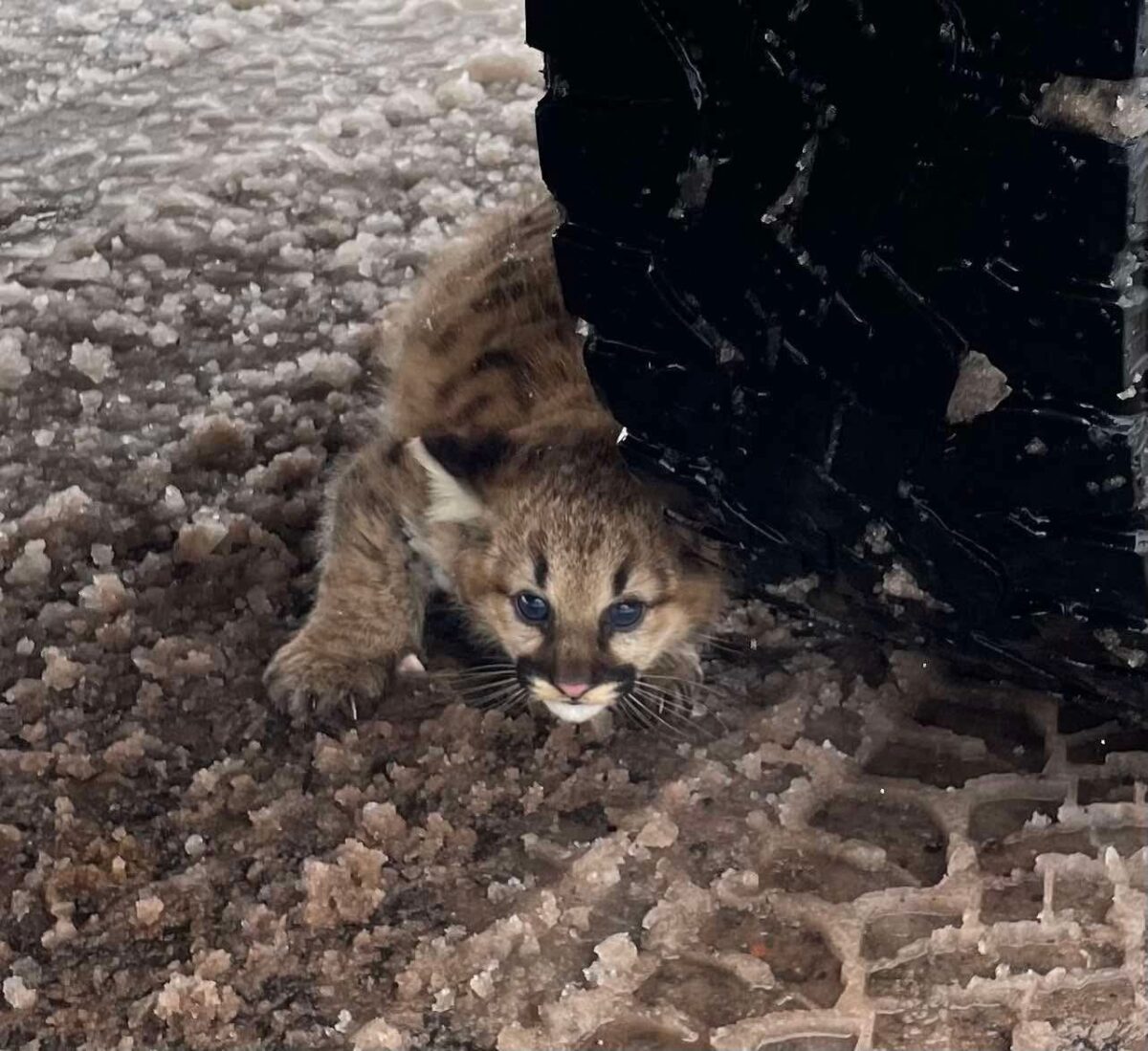Jan 15, 2019
The Woolsey Fire: Inside the mind of a mountain lion
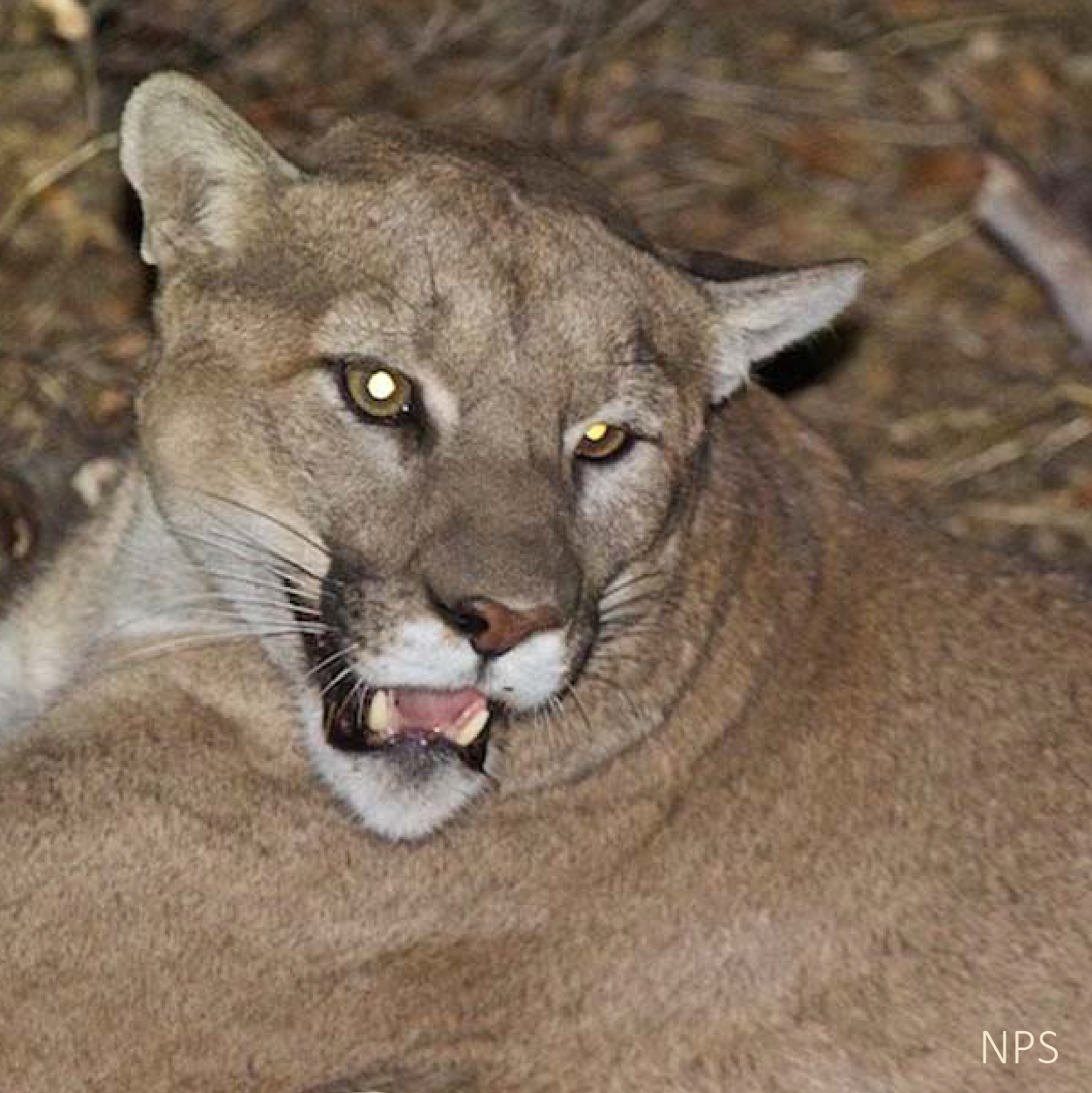 The Woolsey Fire: Inside the mind of a mountain lion
The Woolsey Fire: Inside the mind of a mountain lion
Since 2002, mountain lions have been studied extensively in the Santa Monica Mountains. Information on diet, habitat selection, home ranges, and mortality has been analyzed using data collected from GPS collars. This long-term research offers insights on how pumas eat, live, and reproduce in isolated environments. The Woolsey Fire burned a total of 96,949 acres in November 2018. Of these, 88% were federal lands and 47% of the Santa Monica National Recreation Area was burned, and 2 mortalities of collared lions were reported (P-74 and P-64). With thirteen mountain lions radio collared in the region, this will be a unique opportunity to see how mountain lions fair post-fire.

Like humans, mountain lions must decide when it is time to evacuate an area. How do these cats make this decision? A lions first clue of the oncoming danger may be when it smells the smoke. As the smell intensifies, and the fire gets closer, a lion must determine whether or not it should flee its territory – the place where they defend their resources.How do lions know where to go? A mountain lion’s cognitive map, or understanding of its territory, will change over time and with experience. These maps are in constant flux as disturbances like fire or development occur. Borders also change as a function of resource availability. One way that researchers try to understand these cognitive maps are through the use of GPS collar data. GPS collars are set to record a location at set times throughout the day or night. Through these research methods, the locations of animals can be tracked over a period of time, and the selection for certain habitat features and how that selection changes throughout time can be quantified.
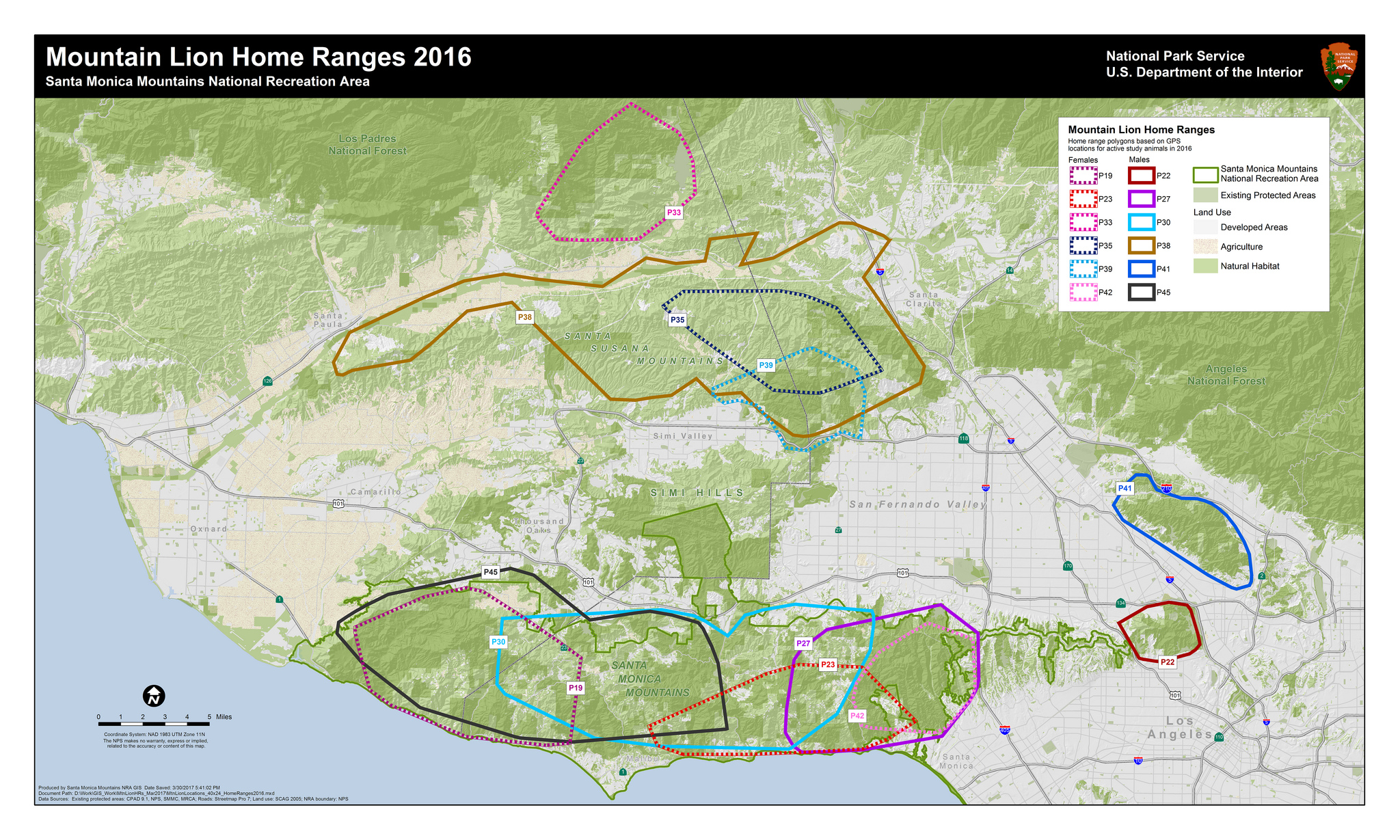
In an isolated area such as the Santa Monica Mountains, territories are shrunk in acreage and are close to one another. Because mountain lions limit their own populations, it is no surprise that intraspecific strife, or conflict between mountain lions, is one of the leading causes of death in this community. As of 2015, of the 44 lions studied in the Santa Monica’s, 19 deaths were documented, which showed 42% of the lions died at the hands of a conspecific. So, it goes without saying that individuals who are temporarily displaced from their territories due to fire events could face conflicts with resident mountain lions.
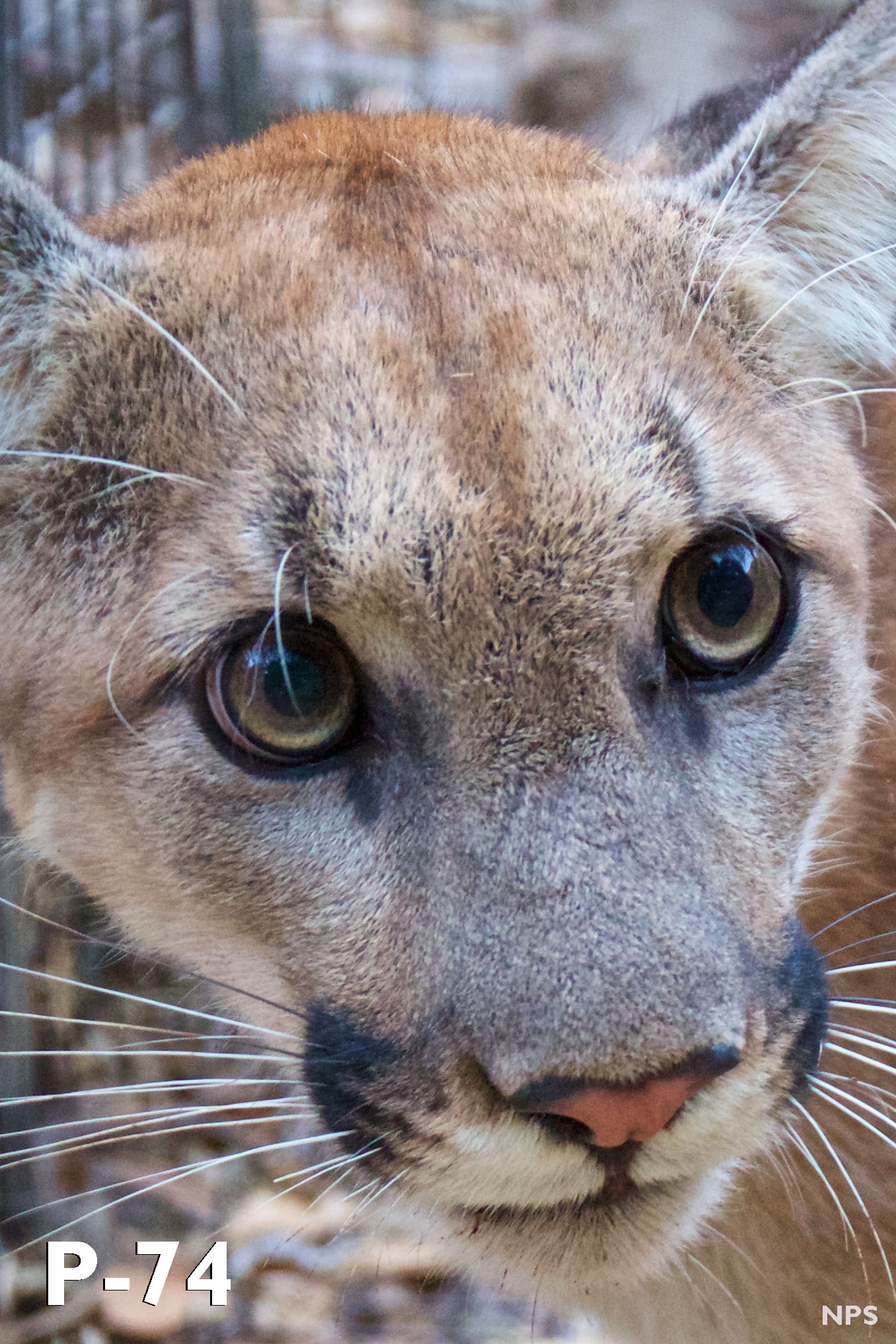 Intraspecific competition has been a strong evolutionary agent for felids, and as a result of this fierce competition, they rely on avoiding one another to keep the peace. Main methods of communication between conspecifics happens indirectly through olfactory cues in the environment, namely scrapes, cheek rubbing, and scat. Presumably, these signals are destroyed during the occurrence of fire.Mountain lions are fiercely territorial and increased intraspecific strife may occur if these signals are not present on the landscape. Territory boundaries will have to be re-established, but it is not clear how this happens after a major fire event.Does the risk of getting trapped in the fire have to be higher than the risk of being killed by a conspecific in order for the lion to step into another animals territory? How does this cost-benefit analysis occur inside the mind of a mountain lion? Fires – coupled with high winds – could trap lions in the flames, so this decision must be made quickly.For mothers with kittens, this will put them and their young at a higher risk. Moms might be less able to flee as rapidly since kittens may not be able to move as fast as the mother. Kittens who are too young to move with their mother may be abandoned in such circumstances. It is believed by biologists National Park Service biologists that the young mountain lion known as P-74 had not yet disbursed from his mother. He had been documented traveling with his mother less than a month before the fire by remotely triggered trail cameras. He likely did not survive the Woolsey Fire.”When the fire first broke out on the afternoon of November 8, 2018, P-64 was in the Simi Hills, north of Oak Park. He continued to travel throughout the Simi Hills for the next few days, covering several miles before then hunkering down in a remote area. Our biologist located P-64 on November 26 with a telemetry device in an unburned portion of the Simi Hills. This boosted hopes that P-64 may have been on a kill and surviving. The last GPS point transmitted by the collar was on November 28, but the collars commonly go multiple days without connecting to the satellites and transmitting points. Our biologist hiked in to the location of the last GPS point on December 3 and found P-64’s remains nearby. He appeared to have been dead for a few days.” – NPS
Intraspecific competition has been a strong evolutionary agent for felids, and as a result of this fierce competition, they rely on avoiding one another to keep the peace. Main methods of communication between conspecifics happens indirectly through olfactory cues in the environment, namely scrapes, cheek rubbing, and scat. Presumably, these signals are destroyed during the occurrence of fire.Mountain lions are fiercely territorial and increased intraspecific strife may occur if these signals are not present on the landscape. Territory boundaries will have to be re-established, but it is not clear how this happens after a major fire event.Does the risk of getting trapped in the fire have to be higher than the risk of being killed by a conspecific in order for the lion to step into another animals territory? How does this cost-benefit analysis occur inside the mind of a mountain lion? Fires – coupled with high winds – could trap lions in the flames, so this decision must be made quickly.For mothers with kittens, this will put them and their young at a higher risk. Moms might be less able to flee as rapidly since kittens may not be able to move as fast as the mother. Kittens who are too young to move with their mother may be abandoned in such circumstances. It is believed by biologists National Park Service biologists that the young mountain lion known as P-74 had not yet disbursed from his mother. He had been documented traveling with his mother less than a month before the fire by remotely triggered trail cameras. He likely did not survive the Woolsey Fire.”When the fire first broke out on the afternoon of November 8, 2018, P-64 was in the Simi Hills, north of Oak Park. He continued to travel throughout the Simi Hills for the next few days, covering several miles before then hunkering down in a remote area. Our biologist located P-64 on November 26 with a telemetry device in an unburned portion of the Simi Hills. This boosted hopes that P-64 may have been on a kill and surviving. The last GPS point transmitted by the collar was on November 28, but the collars commonly go multiple days without connecting to the satellites and transmitting points. Our biologist hiked in to the location of the last GPS point on December 3 and found P-64’s remains nearby. He appeared to have been dead for a few days.” – NPS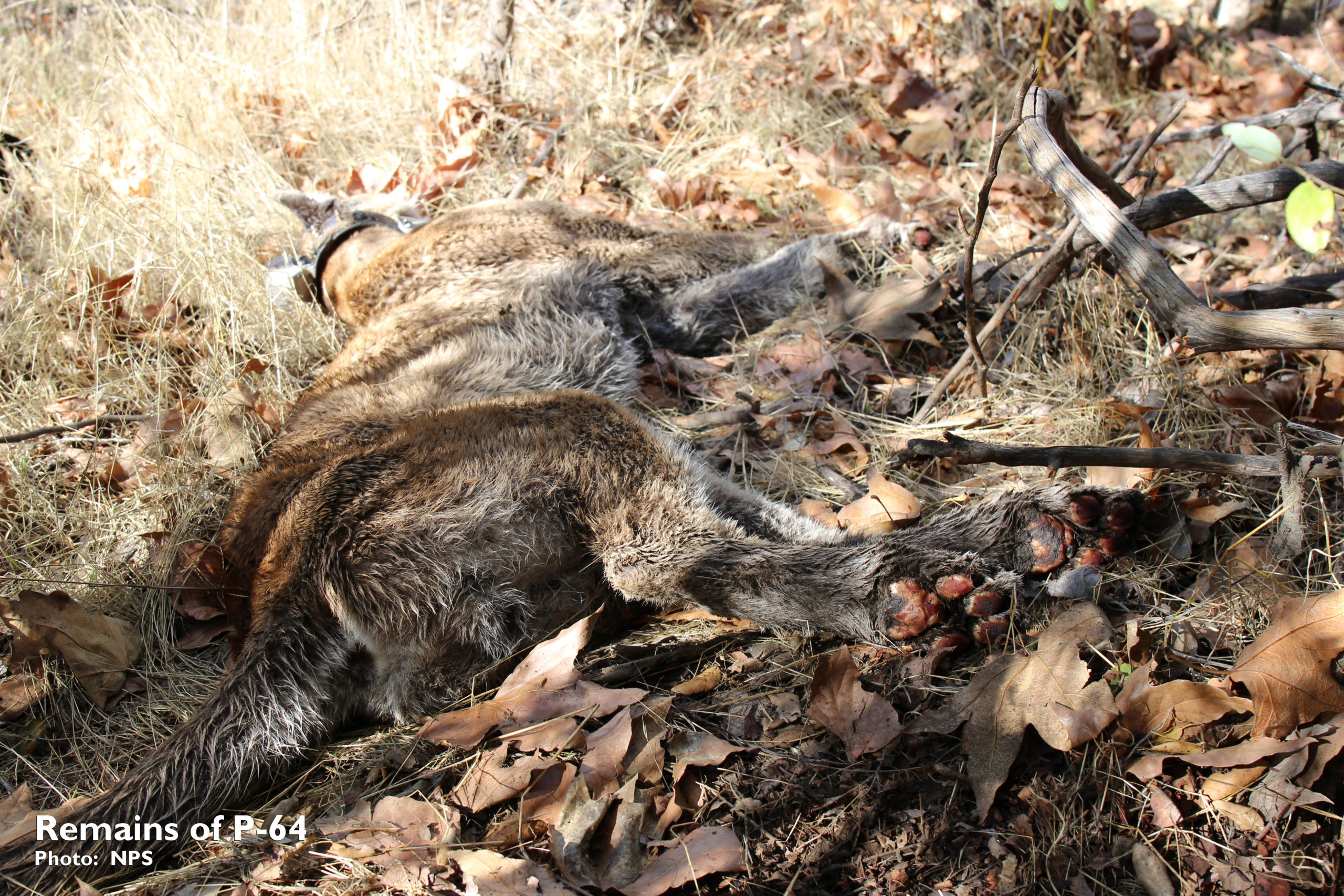
A mountain lion’s survival normally depends on avoiding other lions (except when mating), and avoiding humans. Fleeing into unknown areas could pose threats from another kind of predator – humans. Outside of a lions territory, they are not familiar with their surroundings, and are potentially unaware of where to go or what areas are safe. While the world watched as rabbits took refuge on sidewalks next to news crews who were reporting the latest updates, mountain lions do not have this luxury. A lion does not have the option to seek safety in highly populated area due to public perception and perceived threats associated with such sightings. To avoid death by fire, a lion can flee to an area within its own territory, or if required, can move outside of it. This new landscape may not be part of the lions cognitive map, and they will have to navigate unfamiliar ridge lines, canyons, and find water sources.Mountain lions that survive will face a new array of challenges. Loss of optimal habitat may shift their core areas, they may have to compete with another lion while re-establishing their territory, or they may struggle to find the resources necessary to survive. However, mountain lions will not be the only ones who will have to adapt to the changed environment. It will be interesting to see how both predators and prey – such as mountain lions and mule deer – will adjust to a landscape altered by fire.Things don’t always end poorly for these wild cats. In January of 2018, a juvenile mountain lion was rescued in Ventura County after the Thomas Fire. The cub was was discovered to be limping by local residents, and the cat was taken to California Department of Fish and Wildlife headquarters for treatment. UC Davis veterinarians tested a new, innovative biological bandage treatment to heal the cub’s burned paws with tilapia skins.



 Facebook
Facebook Twitter
Twitter Send Email
Send Email

